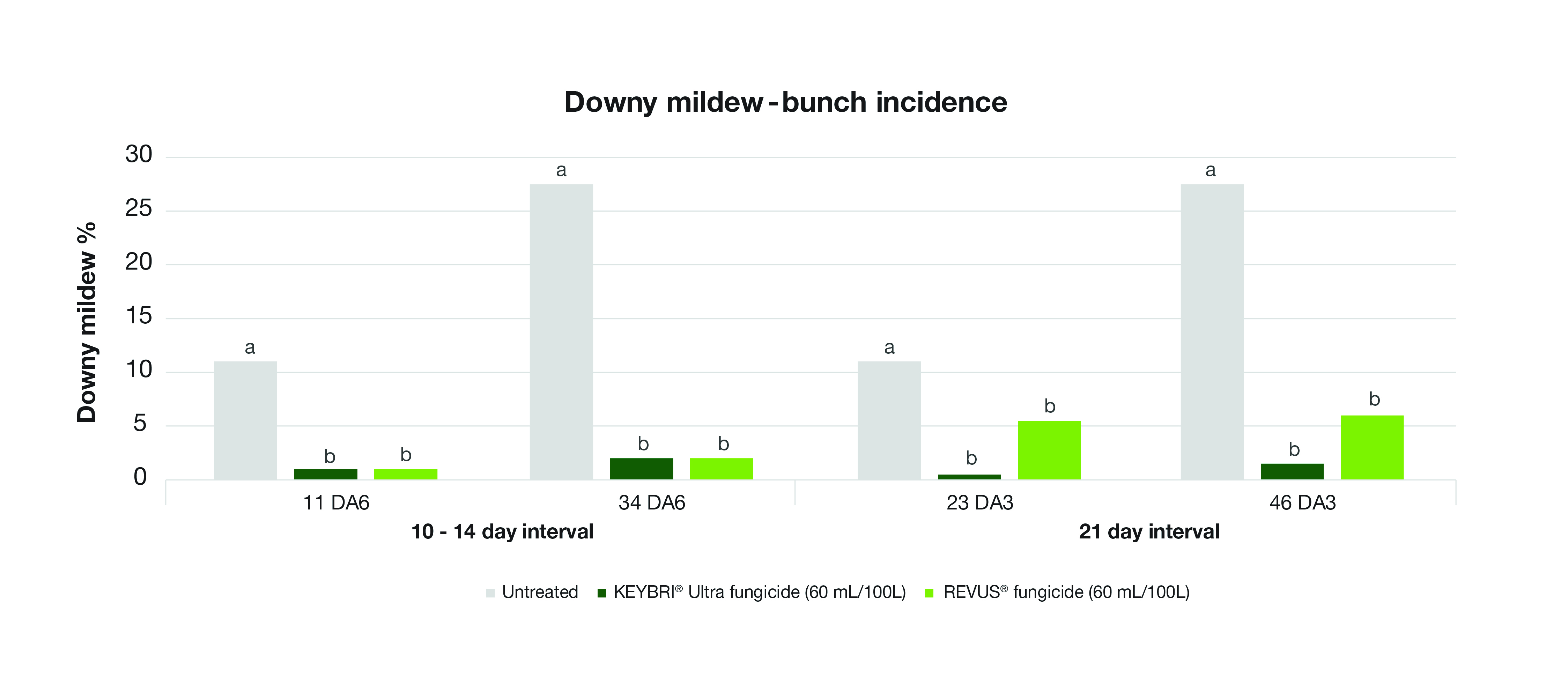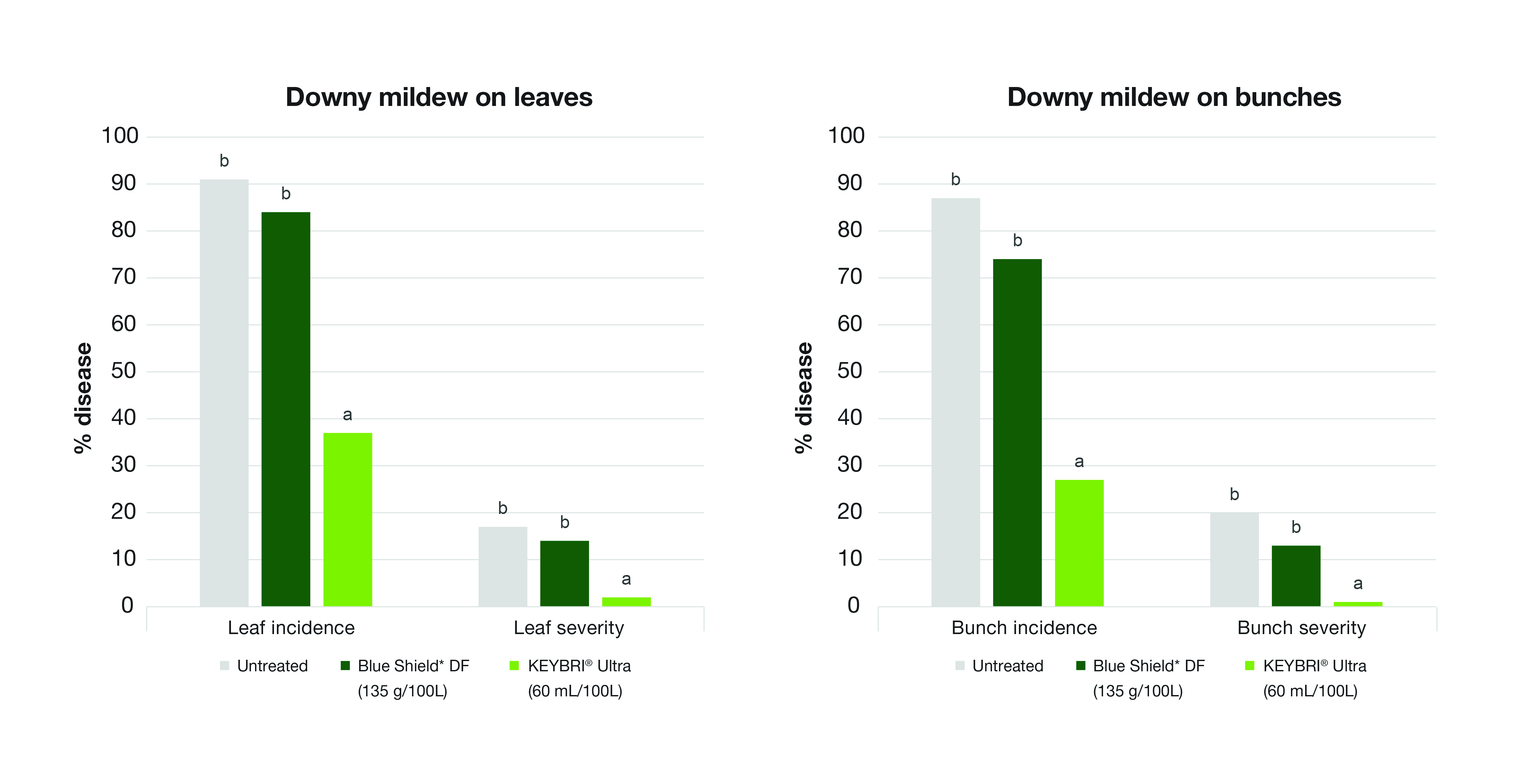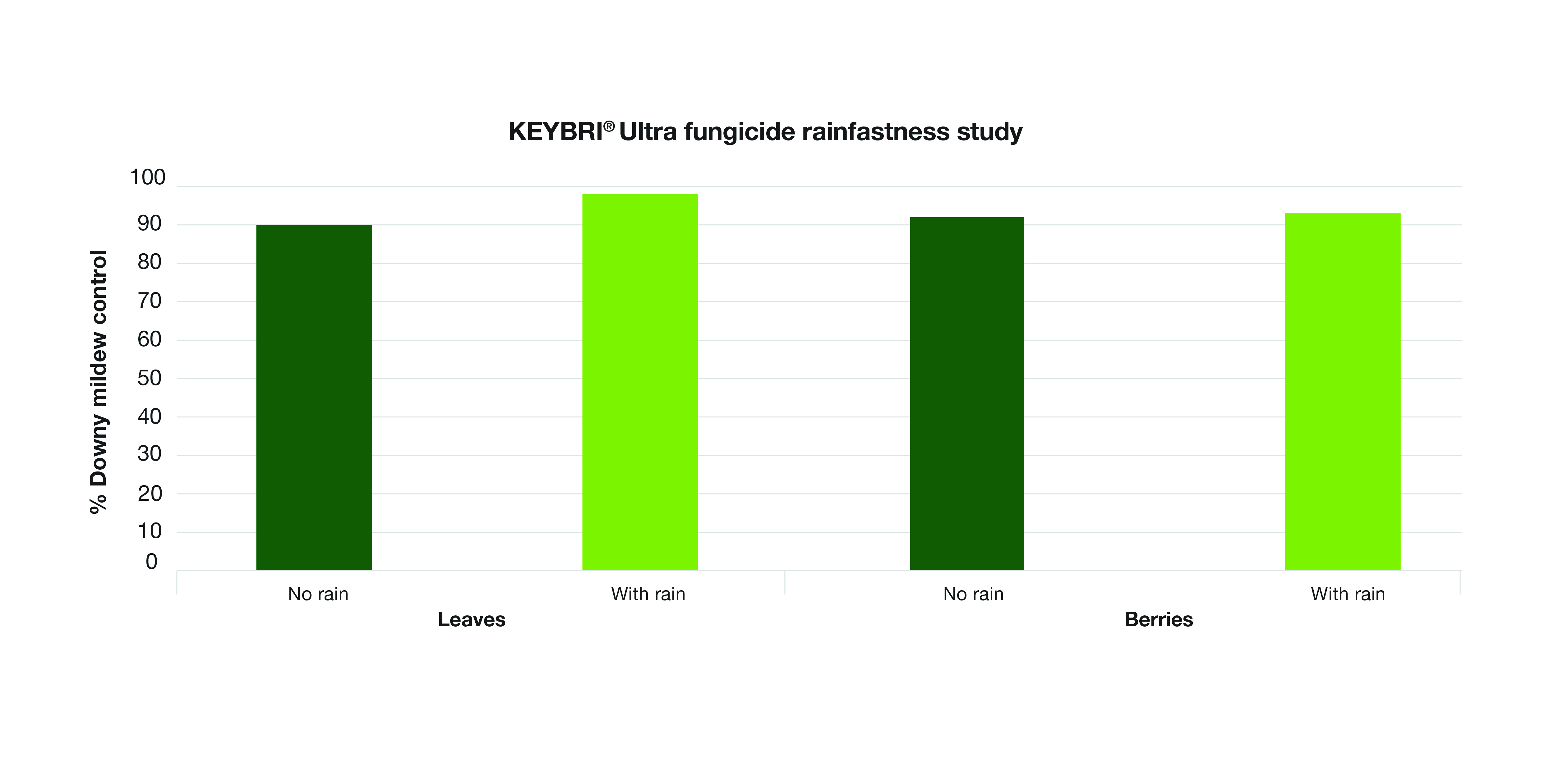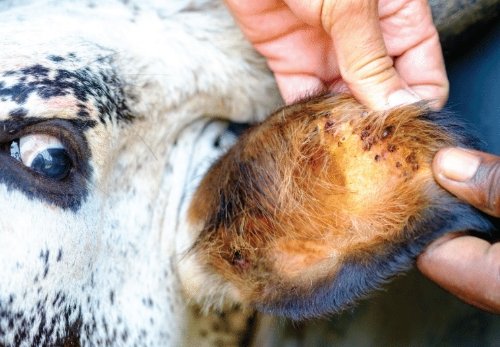Consistency is the key when keeping downy mildew out of grape crops, making Keybri Ultra a powerful choice in unpredictable seasons.
“Keybri Ultra offers a new standard in protection, being a combination of two specialist downy mildew fungicides, which growers can count on as it targets the key stages of disease development during initial infection and early-stage establishment,” Syngenta technical services lead Len Ibbotson says.
“This protection is quickly established and is long lasting, which is crucial when conditions can delay fungicide applications,” he adds.
Keybri Ultra fungicide highlights
Effective downy mildew control: Keybri Ultra fungicide provides robust protection against downy mildew, helping grape growers safeguard their crops from this destructive disease.
Complete formulation: Incorporating two specialist downy mildew fungicides and an adjuvant package, KEYBRI Ultra fungicide has built in resistance management with no requirement to add additional products to the tank.
Extended residual activity: With its long-lasting residual activity up to 21 days, Keybri Ultra fungicide ensures prolonged defence, reducing the need for frequent applications and providing peace of mind for growers.
Rainfastness: This fungicide's exceptional rainfastness ensures it remains effective even after exposure to rainfall, offering reliable protection under varying weather conditions.
Enhanced formulation: Keybri Ultra fungicide's advanced formulation maximises spreading and uptake, optimising its efficacy and ensuring comprehensive protection for grapevines.
Strong control and extended protection
Keybri Ultra is a fully loaded and optimised formulation, streamlining spray applications.
Complete with in-built adjuvant, Keybri Ultra contains oxathiapiprolin, a potent oomycete fungicide that inhibits downy mildew development at extremely low concentrations, along with proven mandipropamid.
Not only does this make Keybri Ultra a robust option, it gives growers a welcome alternative to copper mixes.
In Australia, the performance, crop safety and physical compatibility of Keybri Ultra were evaluated across several seasons, in different locations with multiple cultivars.
During the development studies in Australia, Keybri Ultra performed exceptionally well and was comparable with existing standards, including Revus fungicide, when treatments were applied at a 10-14 spray interval.
However, when the spray interval was extended to 21 days, trial results suggested that Keybri Ultra may offer superior performance and extended residual control of downy mildew, compared to Revus fungicide (Figure 1 and 2).

Len says protecting the fruit against disease is paramount, but also noted the value in protecting vegetative growth.
“Left unchecked, downy mildew infections can cause significant damage to the grapevine canopy with the potential for a complete loss of leaves during the growing season,” Len says.
“Premature defoliation not only reduces ripening capacity in the current season but can lead to a reduction of carbohydrate reserves and vine performance for the subsequent season,” he says.
In multiple studies carried out in Australia, Keybri Ultra consistently reduced defoliation of vines affected with downy mildew.
During the 2023-2024 growing season, Keybri Ultra fungicide was evaluated under commercial application conditions in Victoria’s Yarra Valley, using the maximum of two applications, strategically timed to align with possible infection windows.

Keybri Ultra was compared to untreated vines, which received no early season downy mildew treatments and a copper treatment (Blue Shield* DF).
Fortnightly copper cover sprays were applied to both treated and untreated vines from early December through to veraison in response to wet conditions that persisted throughout December.
Len noted Keybri Ultra performed exceptionally well considering the very lean downy mildew program, with a low and commercially acceptable level of disease noted on vines and bunches when assessed in February (Figure 1, 3).
Keybri Ultra vines appeared overall healthy and the full impact of downy mildew was clear on untreated vines, with significant canopy deterioration and almost no crop (Figure 1).
Throughout the development studies, Keybri Ultra was also found to be safe to grapevines and highly compatible with a range of potential tank mix partners.

Outstanding performance under wet conditions
Keybri Ultra fungicide is locally systemic with limited acropetal xylem mobility.
Both active ingredients bind strongly to the waxy cuticle layer and are then absorbed through leaves or berry caps offering protection to the underside of these tissues (translaminar movement).
Oxathiapiprolin is also translocated gradually outwards through the xylem.
“This combination of strong binding, translaminar movement and gradual translocation is what give Keybri Ultra fungicide its excellent rainfastness and residual disease control properties,” Len says.
The rainfastness properties of Keybri Ultra were evaluated in several studies, with no drop in performance even when up to 60mm of rainfall was applied one hour after application (Figure 4).
Rainfastness is a critical quality of a good downy mildew fungicide, as disease pressure increases during wet periods and the best control is achieved when fungicides are applied before rain and subsequent infection periods.
Growers can be confident Keybri Ultra will continue to offer strong protection, controlling downy mildew even during challenging conditions where access to vineyards for post infection sprays may not be possible.

Conclusion
“Keybri Ultra fungicide represents a significant milestone in the fight against downy mildew in grapes, offering growers a reliable and effective solution for disease management,” Len says.
“With its powerful formulation, extended protection, and exceptional rainfastness, this fungicide is poised to make a substantial impact for downy mildew management in wine grapes, supporting healthier vineyards and higher-quality yields,” he adds.




